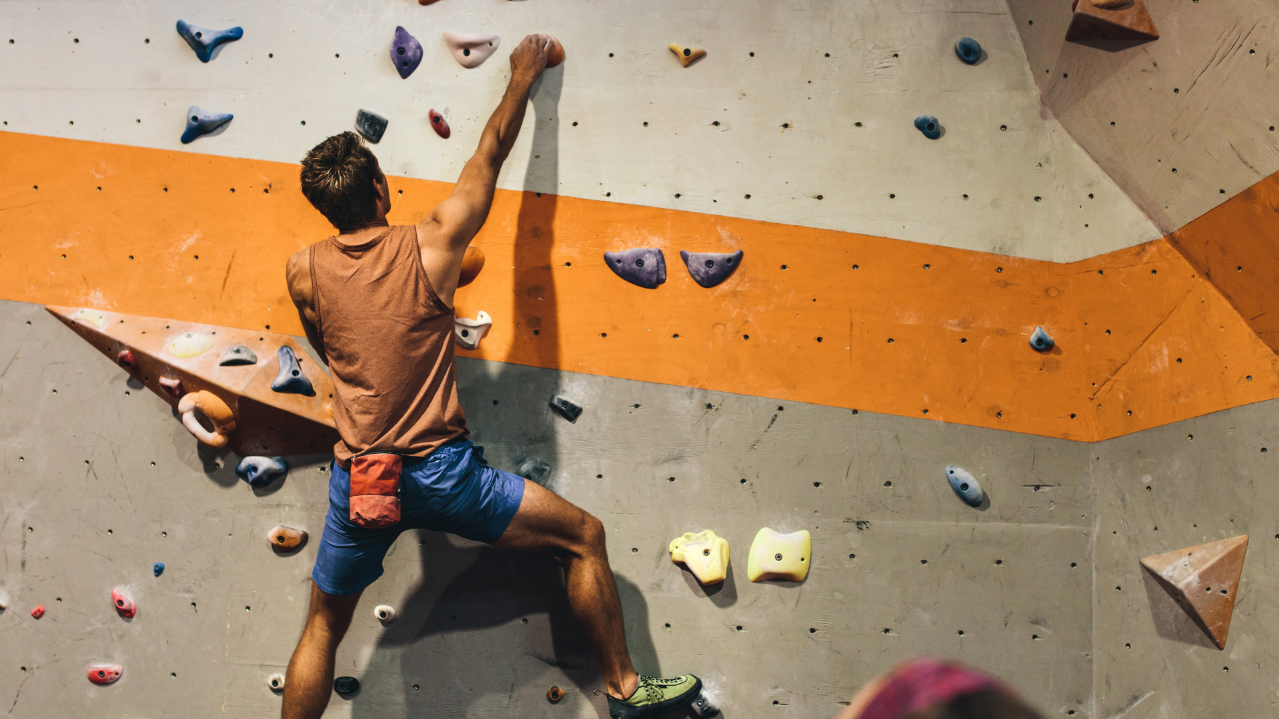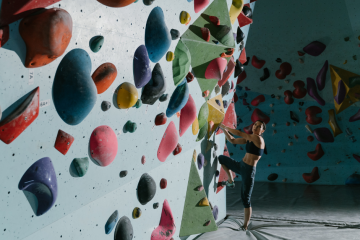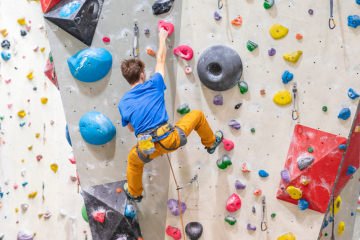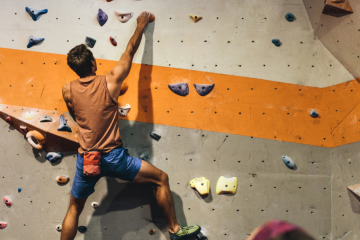
What is Bouldering? – An Introductory Guide to Climbing Without Ropes
Bouldering, a form of rock climbing, is rapidly gaining popularity as a dynamic, accessible sport. Unlike traditional climbing, it forgoes ropes and harnesses, focusing instead on short but challenging routes, known as “problems.” This guide provides a comprehensive overview of bouldering, making it an ideal read for those curious about taking their first steps up the wall.
The Basics of Bouldering
At its core, bouldering is about navigating a series of climbing routes close to the ground. It’s typically practiced on natural rock formations or at indoor climbing gyms. While traditional rock climbing often involves ascending tall cliffs and requires a range of safety equipment, bouldering challenges climbers with shorter routes, usually less than 20 feet tall. Climbers tackle these problems using a combination of strength, technique, and problem-solving skills. Bouldering routes are graded for difficulty, allowing climbers to progressively challenge themselves.
Essential Gear for Bouldering
The beauty of bouldering lies in its simplicity, particularly regarding gear. The essentials include:
- Climbing Shoes: These snug-fitting shoes enhance grip on the rock or wall. Look for a balance between comfort and tightness.
- Chalk: Used to keep hands dry for better grip, climbing chalk is a must-have. Chalk bags or balls are commonly used to carry and apply it.
- Crash Pads: Placed on the ground to cushion falls, crash pads are particularly important for outdoor bouldering.
When starting, many climbers rent gear from gyms, making it a cost-effective way to try out the sport.
Bouldering Techniques and Skills
Bouldering is as much about mental strategy as physical strength. Beginners should focus on:
- Footwork: Good foot placement is crucial. Practice stepping accurately and quietly on the holds.
- Hand Positioning: Learn the various types of handholds, from jugs (large and easy to grip) to crimps (small and challenging).
- Body Positioning: Understanding how to shift your weight and when to make dynamic moves is key.
As you progress, you’ll develop a sense of which techniques work best for different types of problems.
Safety First in Bouldering
Safety is paramount in bouldering, especially since it doesn’t involve ropes. Here are some essential safety tips:
- Spotting: Have a partner or spotter watch and guide your falls to ensure you land safely.
- Fall Practice: Learn how to fall correctly to minimize injury risk. This involves controlled falls onto crash pads.
- Warm-Up: Always start with a warm-up routine to prepare your muscles and reduce the chance of injury.
Remember, listening to your body and knowing your limits is crucial in preventing accidents.
Bouldering as a Social Sport
One of the most appealing aspects of bouldering is its social nature. Climbing gyms are communal spaces where beginners and veterans alike share tips, celebrate successes, and encourage each other. Many gyms offer classes, clubs, and social events, making them great places to meet new people and learn from more experienced climbers. Outdoor bouldering spots also often have a community atmosphere, with climbers sharing advice and encouragement.
Conclusion
Bouldering is an exhilarating, accessible sport that combines physical challenge with mental strategy. Its simplicity in terms of gear and the supportive community around it make it an excellent choice for anyone looking to try a new, engaging form of exercise. Whether you’re scaling an indoor wall or a natural rock formation, bouldering offers a unique, rewarding experience that can quickly turn into a lifelong passion.








